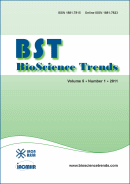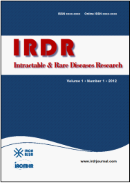Drug Discov Ther. 2017;11(1):41-46. (DOI: 10.5582/ddt.2016.01071)
Olive and ginkgo extracts as potential cataract therapy with differential inhibitory activity on aldose reductase.
Elimam DM, Ibrahim AS, Liou GI, Badria FA
Aldose reductase (AR) has been the leading target in the treatment of diabetic cataract. Although numerous synthetic AR inhibitors (ARI) have been identified, their adverse side effects currently preclude their use. Olive leaf extract (OLE) as well as ginkgo leaf extract (GLE) are natural supplements that have wide therapeutic indices and a plethora of salutary effects during diabetes that so far untested on sugar cataract progression. As such, the present study sought to evaluate the AR-inhibiting properties of OLE and GLE using the isolated enzyme from rabbit lens. Biochemical analyses revealed that both OLE and GLE inhibited rabbit lens AR activity in a concentration-dependent manner with half maximal inhibitory concentration (IC50) 65 μg/mL and 72.5 μg/mL, respectively. Interestingly, the results of kinetic studies exhibited a differential pattern of inhibition by these two extracts. While an non-competitive inhibition of AR was promoted by OLE recognized by significant decrease in the apparent maximum velocity (Vmax) (0.12 ± 0.009677 μM/min versus 0.278 ± 0.0013677 μM/min) without significant change in Michaelis constant (Km), the GLE showed a competitive pattern of inhibition characterized by significant increase in apparent Km (4.4 ± 0.0068 μM), without change in Vmax value. It would appear that these classes of natural extracts represent effective and safe therapeutic options that hold the great promise for treatment not only diabetic cataract, but also other ocular diseases characterized by uncontrolled AR activity.







